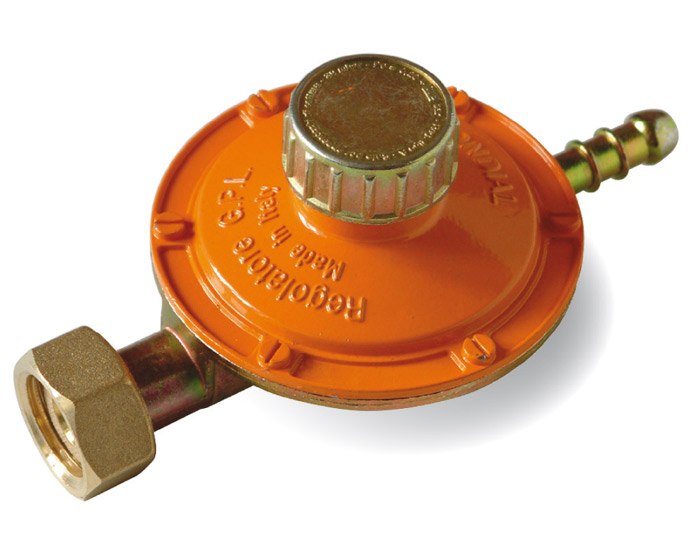The pressure regulator's functioning
User-devices need the right supply, which is provided by the pressure regulator

The functioning principle of a pressure regulator is based on the flow-lamination of the gas that goes through it, and on the loading-loss that generates on this passage.
Such lamination is obtained by a piston that is connected to a regulation spring, the bench-calibration of which, allows defining the final pressure to which the gas used will be supplied.
The gas pressure regulator is manufactured with a brass body and it is bench-calibrated right after its assembly. This calibration guarantees the correct regulation pressure, especially for the ones without setting knob.
The use of a pressure regulator is the one of rendering the pressure of a gas, in the exit of a tank, suitable for the user or the downstream users. They are widely used on portable LPG tanks supplying cookers or other devices, such as camping fridges.
The pressure regulator is a necessary device even on control-units and mini-control-units for the distribution of gas. In cases where there could be high pressures upstream, we can find it in combination with a first-pressure adaptor.
Such lamination is obtained by a piston that is connected to a regulation spring, the bench-calibration of which, allows defining the final pressure to which the gas used will be supplied.
The gas pressure regulator is manufactured with a brass body and it is bench-calibrated right after its assembly. This calibration guarantees the correct regulation pressure, especially for the ones without setting knob.
The use of a pressure regulator is the one of rendering the pressure of a gas, in the exit of a tank, suitable for the user or the downstream users. They are widely used on portable LPG tanks supplying cookers or other devices, such as camping fridges.
The pressure regulator is a necessary device even on control-units and mini-control-units for the distribution of gas. In cases where there could be high pressures upstream, we can find it in combination with a first-pressure adaptor.
10/09/2015
I contenuti di questo sito non hanno carattere di periodicità e non rappresentano 'prodotto editoriale'.









